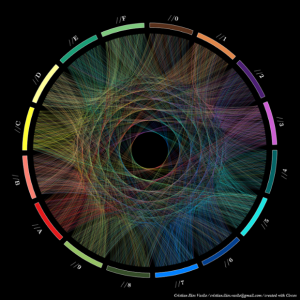For those of us on the West Coast, the time will be 10 am, today. What a shame this wasn’t on the website when I checked for National Science and Technology Week events for my Sept. 11, 2012 posting. Happily, the event list for BC has grown and it’s not too late to participate,
British Columbia
Shaw Ocean Discovery Centre
ShawTitle of Event: Floating Ideas Lecture Series; Playing with Giants: Enrichment of Giant Pacific Octopus in Captivity
Location: Shaw Ocean Discovery Centre
Date: October 18, 7:00pm (doors open at 6:30)
Description: Learn how the Aquarist Team at the SODC is putting the giant Pacific octopus to the test and researching how to enrich the time they spend within the Centre.
Kootenay Association for Science & Technology
KASTTitle of Event: RoboGames
Location: Nelson, BC
Date: Training Sessions – October 18th, 25th; November 1st, 8th Competition – November 10th
Description: Robotics circuit training (4 sessions) and team-based competition. Open to kids aged 11 – 18, in the West Kootenay region.
Telus World of Science
Telus World of ScienceTitle of Event: Grade 8-10 Practical Science for the Classroom
Location: Telus World of Science – Vancouver
Date: October 19th, 2012, 8:30am – 3:15pm
Description: A full day of Professional Development for Grade 8 – 10 Science Teachers. http://www.bcscta.ca/
Title of Event: SWEET presents On The Edge, an inside look at Parkour
Location: Telus World of Science – Vancouver
Date: October 12, 6:30 to 10pm
Description: Cost is $10 + HST, to purchase your tickets in advance please go to http://www.scienceworld.ca/teen(Tickets will also be available at the door)
Title of Event: Westport Innovations Connection weekend
Location: Telus World of Science – Vancouver
Date: Oct 20 & 21, 10am to 6pm
Description: Included with your general admission to Science World. Please go to http://www.scienceworld.ca/aroundthedomefor updated information.
Title of Event: TEDx Kids BC
Location: Telus World of Science – Vancouver
Date: Oct 20, 9am to 5pm
Description: An awesome mix of British Columbia’s finest youth speakers. Please go to http://www.tedxkidsbc.com/ for more information. Attendance for this event is fully booked.
Title of Event: Café Scientifique: Changing Landscapes, Science in Canada’s North
Location: Telus World of Science – Vancouver
Date: Oct 20, 6:30 to 9pm
Description: This is a free event with limited space. Please go to http://www.scienceworld.ca/specialprograms#cafeto RSVP
Title of Event: Opening the Door
Location: Telus World of Science – Vancouver
Date: Oct 12 2012, 3:30 p.m. – 5:30 p.m.
Description: A science career networking event for student’s grade 10 – 12. This is a free event but you must preregister.
Title of Event: Community Science Celebration – NSTW Western Canadian Launch
Location: Telus World of Science – Vancouver
Date: Oct 13 & 14, 10 a.m. – 6:00 p.m.
Description: This is the first event of its kind at TELUS World of Science, and we want you to be there. Let’s celebrate the science all around us at the Vancouver Community Science Celebration! Included with your general admission to Science World. http://www.scienceworld.ca/aroundthedome
BIG Little Science Centre
BLSCTitle of Event: Fun Hands on Science at the BIG Little Science Centre
Location: The BIG Little Science Centre. 985 Holt Street, Kamloops BC.
Date: We are open year round Tuesday to Saturday. Closed Sundays, Mondays and Holidays.10 a.m. – 4 p.m.
Description: Everyone is invited to visit the BIG Little Science Centre for interactive FUN science! Vistit our website www.blscs.org for more information.
Title of Event: Fantastic Kite Day
Location: BIG Little Science Centre
Date: Saturday October 13, 2012, 10am to 4pm
Description: BIG Little Science Centre’s FANTASTIC KITE DAY! Fly your old kite, build a new one, experiment with Bernoulli’s principles of lift and learn about the physics of kite flying. Hands on colour and excitement on the ground and in the air.
Perimeter Institute [emphasis mine]
Perimeter InstituteTitle of Event: 2012 CBC Massey Lectures – What Banged?
Location: Vancouver, British Columbia
Date: October 16, 2012, 8:00 p.m.
Description: Neil Turok, Director of Canada’s Perimeter Institute, delivers the 2012 CBC Massey Lectures in five locations across Canada. Turok explores how the human mind can unlock the universe and transform the future. Please order Massey Lecture tickets directly from each lecture venue. Find a list of venues here.
Gairdner Foundation
Title of Event: Gairdner Foundation High School Outreach Program Lecture at the University of British Columbia
Location: University of British Columbia
Date: 22-Oct-12
Description: Science can be intimidating for teenage students. This is why the Gairdner Foundation’s laureates travel throughout Canada, sharing their personal stories about pursuing a career in research with students from over 120 schools. Today, the University of British Columbia will host a group of high school students for a lecture by Dr. William Kaelin Jr. and Dr. Jeffrey V. Ravetch.
Simon Fraser University
Title of Event: Saturday Morning Lecture Series
Location: SFU Surrey
Date: Saturday October 13, 2012, 10:00 a.m.
Description: TRIUMF, UBC, and SFU are proud to present the 2012-2013 Saturday Morning Lecture series. The lectures will be at a level appropriate for high school students and the general public. Event is free, however please register for tickets so that we can make sure we accomodate everyone. Everyone welcome.
The Exploration Place
Title of Event: National Science and Technology Demonstrations at The Exploration Place!
Location: The Exploration Place, Prince George, BC
Date: October 17th, 18th, 19th
Description: Have some fun with us as we celebrate National Science and Technology Week. Enjoy exciting hands-on activities, interactive daily demos, visit with our critters and tour the galleries.
Let’s Talk Science
Title of Event: Brighouse Science Bash
Location: Richmond, British Columbia
Date: October 19, 11 am to 3 pm
Description: In partnership with Genome BC and Richmond Public Library the 6th annual Science Bash takes place from 11am to 3 pm and will include interactive displays, fun experiments and other hands-on activities.
I’d like to note that the Perimeter Institute/CBC Massey Lectures is running a contest for tickets to the various talks, books, and a grand prize of a trip to the Perimeter Institute and the Large Hadron Collider at CERN (European Particle Physics Laboratory). Here’s more about the contest and about the book by Neil Turok which forms the basis for this Massey Lectures series, the CBC Massey Lectures page,
Good luck with the contest and enjoy this wealth of science events.

